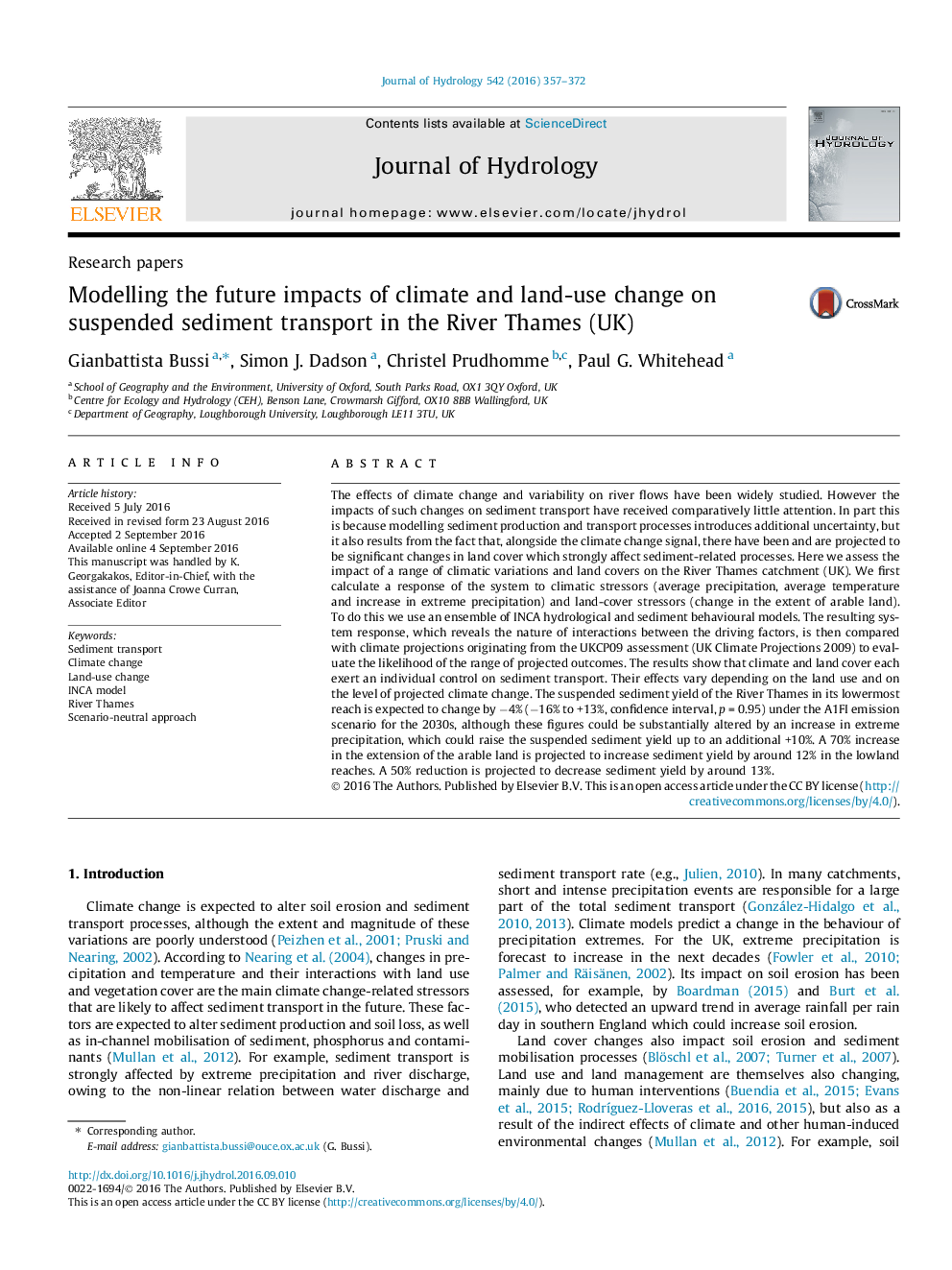| Article ID | Journal | Published Year | Pages | File Type |
|---|---|---|---|---|
| 6409257 | Journal of Hydrology | 2016 | 16 Pages |
â¢INCA-sediment model applied to the Thames catchment (UK).â¢Scenario-neutral methodology used to assess response to climate and land-use.â¢Model uncertainty is estimated within a Monte Carlo-based framework.â¢Climate change and land use change exert a joint control on sediment transport.â¢Reducing the arable land is a robust mitigation strategy under a changing climate.
The effects of climate change and variability on river flows have been widely studied. However the impacts of such changes on sediment transport have received comparatively little attention. In part this is because modelling sediment production and transport processes introduces additional uncertainty, but it also results from the fact that, alongside the climate change signal, there have been and are projected to be significant changes in land cover which strongly affect sediment-related processes. Here we assess the impact of a range of climatic variations and land covers on the River Thames catchment (UK). We first calculate a response of the system to climatic stressors (average precipitation, average temperature and increase in extreme precipitation) and land-cover stressors (change in the extent of arable land). To do this we use an ensemble of INCA hydrological and sediment behavioural models. The resulting system response, which reveals the nature of interactions between the driving factors, is then compared with climate projections originating from the UKCP09 assessment (UK Climate Projections 2009) to evaluate the likelihood of the range of projected outcomes. The results show that climate and land cover each exert an individual control on sediment transport. Their effects vary depending on the land use and on the level of projected climate change. The suspended sediment yield of the River Thames in its lowermost reach is expected to change by â4% (â16% to +13%, confidence interval, p = 0.95) under the A1FI emission scenario for the 2030s, although these figures could be substantially altered by an increase in extreme precipitation, which could raise the suspended sediment yield up to an additional +10%. A 70% increase in the extension of the arable land is projected to increase sediment yield by around 12% in the lowland reaches. A 50% reduction is projected to decrease sediment yield by around 13%.
